In the dynamic realm of cyber security, where adversaries perpetually seek vulnerabilities and exploits, ethical hackers stand as the guardians of digital integrity. Armed not with malice, but with an insatiable curiosity and a fervent dedication to safeguarding digital landscapes, these ethical hackers harness the power of Best Programming Language as their primary arsenal.
Yet, amidst the vast array of coding dialects, which one emerges as the undisputed champion for ethical hacking endeavors? This is the question that drives our exploration today.
Join me on a journey through the labyrinthine corridors of cyberspace as we dissect the nuances, strengths, and applications of various programming languages in the noble pursuit of ethical hacking. From the stalwart guardians like Python to the nimble juggernauts like C and the versatile enigma that is JavaScript, we’ll uncover the unparalleled advantages each language offers in fortifying digital defenses and combating cyber threats.
So, grab your cyber toolkit and embark with me on this expedition to unearth the ultimate programming language for ethical hacking. Together, we’ll unravel the mysteries of code and discover the indispensable tool that empowers ethical hackers to uphold the principles of security, integrity, and justice in the digital realm.
Python
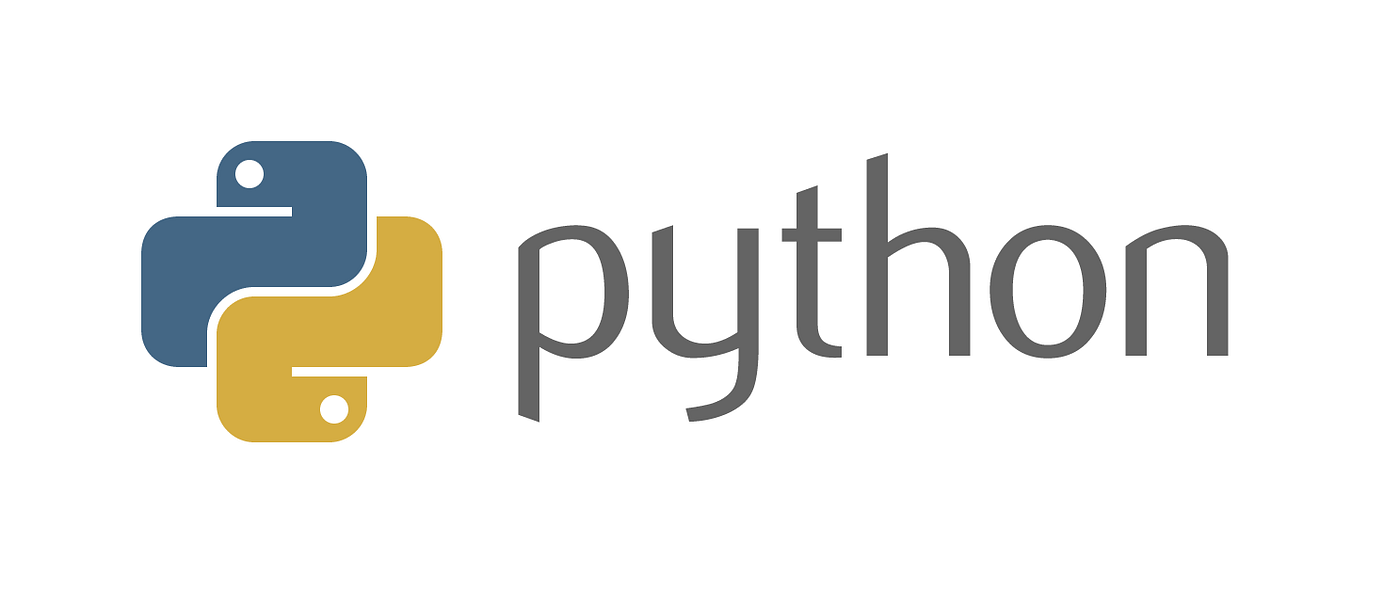
Hacking, in the context of computer science, is the art of finding weaknesses in computer systems and exploiting them for various purposes. It can be used for both good (ethical hacking) and malicious (black hat hacking) intentions. Programming languages play a crucial role in hacking, providing hackers with the tools needed to execute their tasks efficiently.
Understanding the Role of Programming Languages in Hacking
Programming languages serve as the backbone of hacking tools and techniques. They enable hackers to write scripts, develop exploits, and automate tasks essential for penetrating systems, analyzing vulnerabilities, and securing networks.
Why Python is the Best Programming Language for Hacking
Python is renowned for its versatility, making it an ideal choice for hacking purposes. Its syntax is simple and easy to understand, allowing hackers to write concise and readable code for various hacking tasks.
Python boasts a vast collection of libraries specifically designed for hacking and cybersecurity. These libraries provide pre-built functions and modules for tasks such as network scanning, cryptography, and exploit development, reducing the time and effort required to implement complex hacking techniques.
One of the significant advantages of Python is its beginner-friendly nature. Even individuals with minimal programming experience can quickly grasp Python’s concepts and start writing functional code. This accessibility makes Python an attractive option for aspiring hackers looking to enter the field.
Python benefits from a thriving community of developers and cybersecurity enthusiasts who actively contribute to its growth. This community-driven ecosystem ensures continuous updates, bug fixes, and the development of new tools and techniques tailored to the evolving landscape of hacking and cybersecurity.
Applications of Python in Hacking
Python finds extensive use across various hacking scenarios, including:
Python facilitates the development of penetration testing tools used to assess the security of computer systems and networks. These tools simulate real-world cyber attacks to identify vulnerabilities and weaknesses that could be exploited by malicious actors.
Network Scanning and Analysis
Python offers powerful libraries for network scanning and analysis, enabling hackers to map out network topologies, discover active hosts, and identify potential entry points for intrusion.
Python’s versatility extends to web scraping and data extraction tasks, allowing hackers to gather information from websites and online databases for reconnaissance purposes or intelligence gathering.
Python provides tools and frameworks for analyzing and reverse-engineering malware, enabling cybersecurity professionals to dissect malicious code, understand its behavior, and develop countermeasures to mitigate its impact.
Comparison with Other Programming Languages
While Python is widely regarded as the best programming language for hacking, other languages such as C/C++, Java, and Ruby also have their merits and applications in the field. However, Python’s simplicity, readability, and extensive library support give it a competitive edge over its counterparts.
Python Frameworks for Hacking
Several Python frameworks are tailored for hacking and cybersecurity purposes, including:
- Metasploit: A powerful framework for developing, testing, and executing exploits against vulnerable systems.
- Scapy: A packet manipulation tool that enables the creation of custom network packets for testing and analysis.
- PyCrypto: A library for cryptographic functions and protocols, essential for implementing secure communication channels and data encryption.
- Nmap: A versatile network scanning tool used for port scanning, service enumeration, and vulnerability detection.
Learning Resources for Python Hacking
Aspiring hackers can access a plethora of learning resources to master Python for hacking, including:
- Online Courses: Platforms like Udemy, Coursera, and Cybrary offer specialized courses on Python hacking and cybersecurity.
- Books: Publications such as “Black Hat Python” by Justin Seitz and “Violent Python” by TJ O’Connor provide in-depth tutorials and practical examples for hacking with Python.
- Tutorials: Numerous online tutorials and guides cover Python hacking techniques, ranging from basic scripting to advanced exploit development.
Best Practices for Ethical Hacking with Python
When engaging in ethical hacking with Python, it’s essential to adhere to best practices to ensure responsible and legal conduct, including:
- Understanding Legal Implications: Familiarize yourself with relevant laws and regulations governing cybersecurity and ensure compliance with ethical standards and guidelines.
- Keeping Skills Updated: Stay informed about the latest developments in Python, hacking techniques, and cybersecurity trends by participating in training programs, attending conferences, and joining online communities.
- Contributing to the Community: Contribute to the cybersecurity community by sharing knowledge, collaborating on open-source projects, and promoting ethical hacking practices to foster a culture of responsible cybersecurity.
Read About: Top Best Rich Man All Time In The World
JavaScript – Best Programming Language
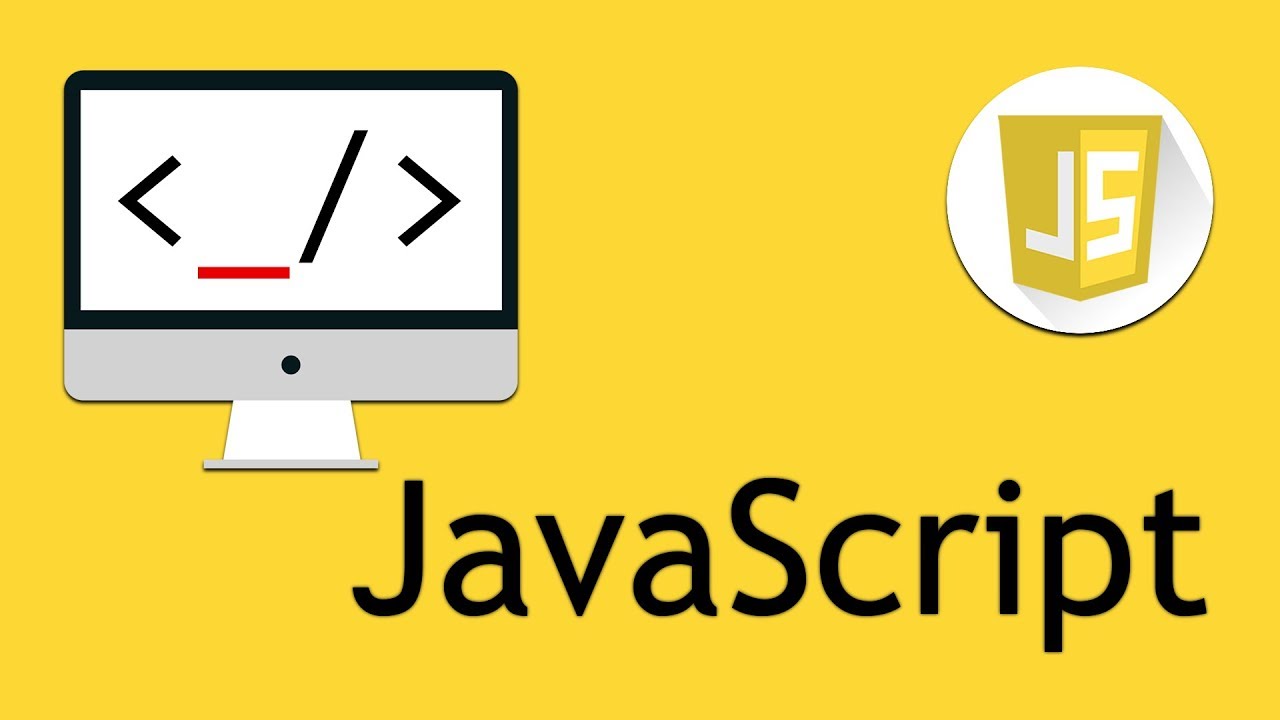
Hacking involves the exploration of computer systems to find vulnerabilities that can be exploited for various purposes. Programming languages are essential tools for hackers, enabling them to write scripts, develop exploits, and automate tasks to penetrate systems and networks.
Understanding the Role of Programming Languages in Hacking
Programming languages form the foundation of hacking tools and techniques, empowering hackers to execute tasks efficiently. They provide the means to analyze vulnerabilities, develop exploits, and implement security measures to protect against cyber threats.
Exploring JavaScript for Hacking
It is widely supported by web browsers and allows for dynamic and interactive content on websites.
JavaScript offers several advantages for hacking purposes, including its ubiquity on the web, ease of integration with HTML and CSS, and support for asynchronous programming, making it suitable for tasks requiring real-time interaction and data processing.
Applications of JavaScript in Hacking
JavaScript finds numerous applications in hacking scenarios, including:
JavaScript can be used to test the security of web applications by simulating various attack vectors, such as injection attacks, authentication bypass, and session hijacking.
JavaScript is commonly employed in XSS attacks to inject malicious code into web pages, allowing attackers to steal sensitive information or manipulate user sessions.
JavaScript exploits can target vulnerabilities in web browsers, plugins, and server-side components, enabling attackers to execute arbitrary code, bypass security mechanisms, and gain unauthorized access to systems.
Comparison with Other Programming Languages
While JavaScript offers unique capabilities for web-based hacking, other programming languages such as Python, C/C++, and Ruby also play significant roles in the hacking community. However, JavaScript’s focus on web technologies and its compatibility with browsers give it a distinct advantage in certain hacking scenarios.
JavaScript Libraries and Frameworks for Hacking
Several JavaScript libraries and frameworks are tailored for hacking and cybersecurity, including:
- Node.js: A runtime environment for server-side JavaScript applications, commonly used for building network tools, web servers, and penetration testing frameworks.
- PhantomJS: A headless browser automation tool that allows for scripted interactions with web pages, useful for web scraping, testing, and vulnerability analysis.
- Express.js: A web application framework for Node.js, providing a robust foundation for building RESTful APIs, web servers, and security tools.
Learning Resources for JavaScript Hacking
Aspiring hackers can access a variety of learning resources to master JavaScript for hacking purposes, including:
- Online Courses: Platforms like Udemy, Coursera, and Pluralsight offer courses on JavaScript hacking, covering topics such as web security, penetration testing, and exploit development.
- Books: Publications such as “Black Hat JavaScript” by Christian Johansen and “Web Security for Developers” by Malcolm McDonald provide comprehensive guides to hacking with JavaScript.
- Tutorials: Numerous online tutorials and guides offer step-by-step instructions and practical examples for using JavaScript in hacking scenarios, ranging from basic scripting to advanced exploit techniques.
Best Practices for Ethical Hacking with JavaScript
When engaging in ethical hacking with JavaScript, it’s essential to adhere to best practices to ensure responsible and legal conduct, including:
- Legal Compliance: Understand and abide by laws and regulations governing cybersecurity and ethical hacking practices to avoid legal repercussions.
- Continuous Learning: Stay updated on the latest developments in JavaScript, web technologies, and cybersecurity trends through self-study, training programs, and participation in cybersecurity communities.
- Community Engagement: Contribute to the cybersecurity community by sharing knowledge, collaborating on open-source projects, and promoting ethical hacking principles to foster a culture of responsible cybersecurity.
Read About: Top Best Airports All Time In The World
PHP – Best Programming Language
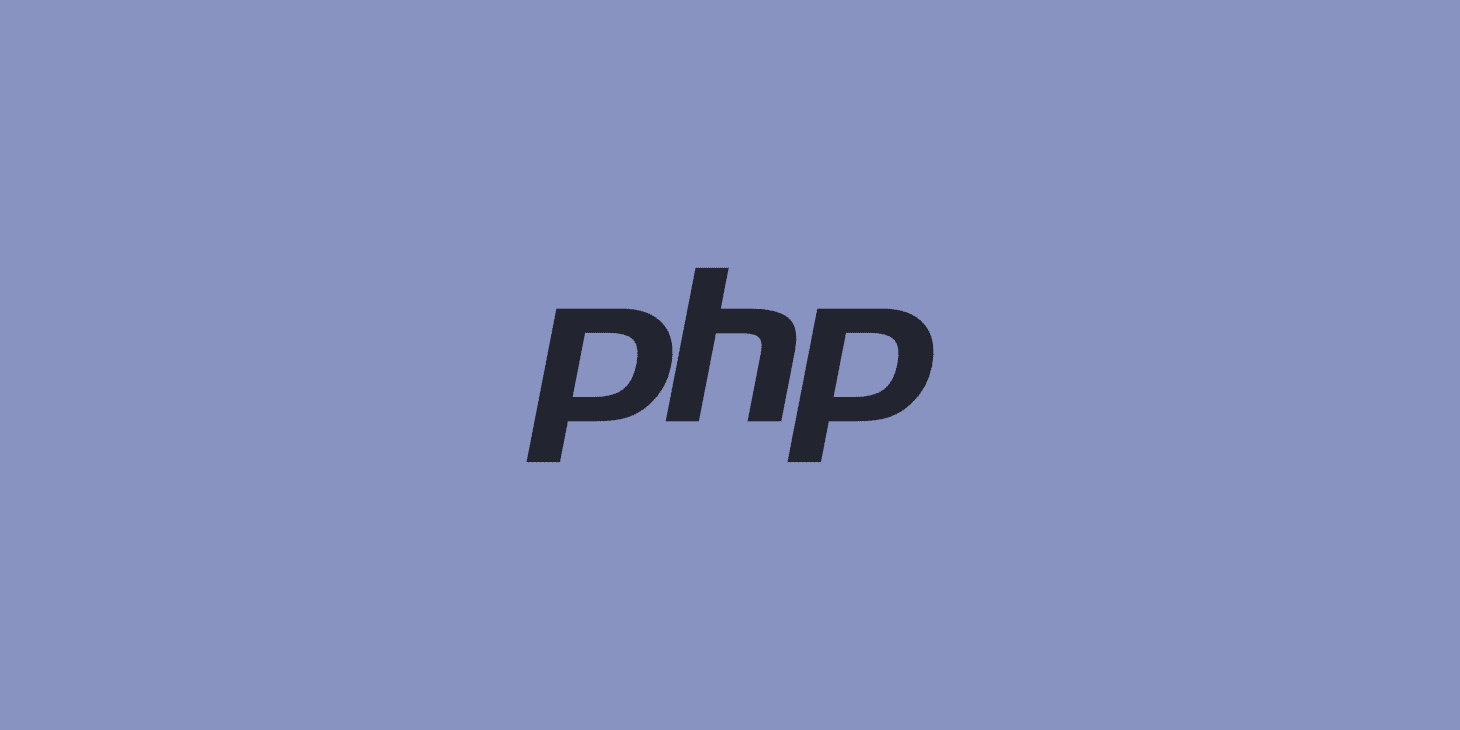
Hacking involves exploring computer systems to identify vulnerabilities that can be exploited for various purposes. Programming languages serve as essential tools for hackers, enabling them to write scripts, develop exploits, and automate tasks to penetrate systems and networks.
Understanding the Role of Programming Languages in Hacking
Programming languages play a crucial role in hacking by providing the means to analyze vulnerabilities, develop exploits, and execute attacks effectively. Hackers leverage programming languages to understand, manipulate, and control the behavior of computer systems and applications.
Exploring PHP for Hacking
PHP (Hypertext Preprocessor) is a server-side scripting language widely used for web development. It powers dynamic websites and web applications by generating HTML content dynamically based on server-side logic.
PHP offers several advantages for hacking purposes, including its widespread adoption, extensive feature set, and built-in support for web development tasks such as file handling, database interaction, and network communication.
Applications of PHP in Hacking
PHP is utilized in various hacking scenarios, including:
PHP scripts can be used to assess the security of web applications by identifying common vulnerabilities such as SQL injection, cross-site scripting (XSS), and file inclusion attacks.
PHP vulnerabilities can be exploited to compromise web servers and gain unauthorized access to sensitive data, execute arbitrary code, or escalate privileges.
PHP-based web shells provide attackers with remote access to compromised web servers, allowing them to execute commands, upload/download files, and maintain persistent control over the system.
Comparison with Other Programming Languages
While PHP offers unique capabilities for server-side hacking, other programming languages such as Python, JavaScript, and Ruby also play significant roles in the hacking community. However, PHP’s focus on web development and server-side scripting gives it a distinct advantage in certain hacking scenarios.
PHP Frameworks and Tools for Hacking
Several PHP frameworks and tools are tailored for hacking and cybersecurity purposes, including:
- OWASP ZAP: An open-source web application security scanner used for detecting vulnerabilities in web applications and APIs.
- PHP Shell: A command-line interface (CLI) tool for executing PHP code on remote servers, enabling attackers to interact with web servers and exploit vulnerabilities.
- SQLMap: A penetration testing tool specifically designed for detecting and exploiting SQL injection vulnerabilities in web applications powered by PHP and other server-side technologies.
Learning Resources for PHP Hacking
Aspiring hackers can access a variety of learning resources to master PHP for hacking purposes, including:
- Online Courses: Platforms like Udemy, Coursera, and Cybrary offer courses on PHP hacking, covering topics such as web security, penetration testing, and exploit development.
- Books: Publications such as “Web Application Security: A Beginner’s Guide” by Bryan Sullivan and “The Web Application Hacker’s Handbook” by Dafydd Stuttard and Marcus Pinto provide comprehensive guides to hacking with PHP.
- Tutorials: Numerous online tutorials and guides offer step-by-step instructions and practical examples for using PHP in hacking scenarios, ranging from basic scripting to advanced exploit techniques.
Best Practices for Ethical Hacking with PHP
When engaging in ethical hacking with PHP, it’s essential to adhere to best practices to ensure responsible and legal conduct, including:
- Legal Compliance: Understand and adhere to laws and regulations governing cybersecurity and ethical hacking practices to avoid legal repercussions and ensure ethical conduct.
- Continuous Skill Development: Stay updated on the latest developments in PHP, web technologies, and cybersecurity trends through self-study, training programs, and participation in cybersecurity communities.
- Collaboration and Community Engagement: Contribute to the cybersecurity community by sharing knowledge, collaborating on open-source projects, and promoting ethical hacking principles to foster a culture of responsible cybersecurity.
Read About: Top Best Largest Cities All Time In The World
SQL – Best Programming Language

Hacking involves the exploration of computer systems to find vulnerabilities that can be exploited for various purposes. Programming languages serve as essential tools for hackers, enabling them to write scripts, develop exploits, and automate tasks to penetrate systems and networks.
Understanding the Role of Programming Languages in Hacking
Programming languages play a crucial role in hacking by providing the means to analyze vulnerabilities, develop exploits, and execute attacks effectively. Hackers leverage programming languages to understand, manipulate, and control the behavior of computer systems and applications.
Exploring SQL for Hacking
It provides a standardized syntax for querying, updating, and managing data stored in database systems such as MySQL, PostgreSQL, and Microsoft SQL Server.
SQL offers several advantages for hacking purposes, including its widespread adoption, powerful querying capabilities, and extensive support for database manipulation and exploitation techniques.
Applications of SQL in Hacking
SQL is utilized in various hacking scenarios, including:
SQL injection attacks exploit vulnerabilities in web applications to manipulate database queries and gain unauthorized access to sensitive data, execute arbitrary SQL commands, or compromise the integrity of the underlying database.
SQL queries can be used to enumerate databases, tables, columns, and data stored in relational databases, providing valuable insights and reconnaissance information for hackers targeting database-driven web applications.
SQL stored procedures and triggers can be exploited to execute arbitrary code, escalate privileges, or bypass access controls, enabling attackers to compromise database servers and extract or manipulate sensitive information.
Comparison with Other Programming Languages
While SQL offers unique capabilities for database manipulation and exploitation, other programming languages such as Python, JavaScript, and PHP also play significant roles in the hacking community. However, SQL’s focus on relational databases and querying techniques gives it a distinct advantage in certain hacking scenarios.
SQL Tools and Techniques for Hacking
Several SQL tools and techniques are tailored for hacking and cybersecurity purposes, including:
- SQLMap: An open-source penetration testing tool specifically designed for detecting and exploiting SQL injection vulnerabilities in web applications and database servers.
- Havij: A popular automated SQL injection tool used for scanning, analyzing, and exploiting SQL injection vulnerabilities in web applications.
- SQLNinja: A command-line tool for exploiting SQL injection vulnerabilities and performing post-exploitation activities on database servers.
Learning Resources for SQL Hacking
Aspiring hackers can access a variety of learning resources to master SQL for hacking purposes, including:
- Online Courses: Platforms like Udemy, Coursera, and Cybrary offer courses on SQL hacking, covering topics such as web security, database penetration testing, and SQL injection techniques.
- Books: Publications such as “The SQL Injection Handbook” by Ankit Fadia and “SQL Injection Attacks and Defense” by Justin Clarke provide comprehensive guides to SQL hacking and cybersecurity.
- Tutorials: Numerous online tutorials and guides offer step-by-step instructions and practical examples for exploiting SQL injection vulnerabilities, performing database enumeration, and manipulating SQL queries.
Best Practices for Ethical Hacking with SQL
When engaging in ethical hacking with SQL, it’s essential to adhere to best practices to ensure responsible and legal conduct, including:
- Legal Compliance: Understand and adhere to laws and regulations governing cybersecurity and ethical hacking practices to avoid legal repercussions and ensure ethical conduct.
- Continuous Learning and Skill Development: Stay updated on the latest developments in SQL, database technologies, and cybersecurity trends through self-study, training programs, and participation in cybersecurity communities.
- Responsible Disclosure: Follow responsible disclosure practices when identifying and reporting SQL injection vulnerabilities to website owners or database administrators to facilitate timely remediation and protect against potential exploitation by malicious actors.
Read About: Top Best Big Cities All Time In The World
Ruby – Best Programming Language
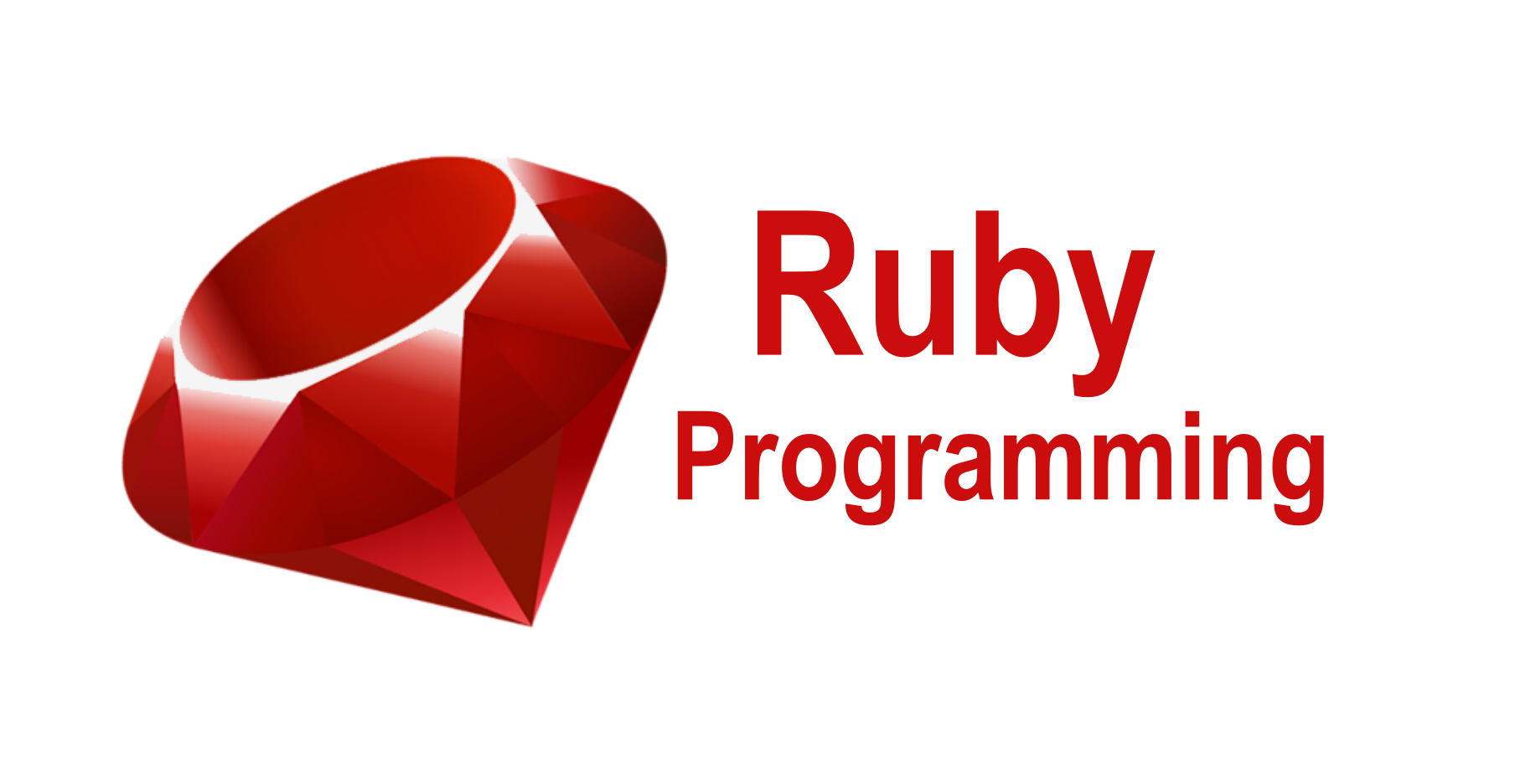
Hacking involves exploring computer systems to find vulnerabilities that can be exploited for various purposes. Programming languages serve as essential tools for hackers, enabling them to write scripts, develop exploits, and automate tasks to penetrate systems and networks.
Understanding the Role of Programming Languages in Hacking
Programming languages play a crucial role in hacking by providing the means to analyze vulnerabilities, develop exploits, and execute attacks effectively. Hackers leverage programming languages to understand, manipulate, and control the behavior of computer systems and applications.
Exploring Ruby for Hacking
It is widely used for web development, automation, and scripting tasks, making it a versatile choice for hacking purposes.
Ruby offers several advantages for hacking purposes, including its concise syntax, powerful built-in features, and extensive library ecosystem. Its focus on developer productivity and ease of use makes it an attractive option for hackers seeking to streamline their workflow and develop efficient exploits.
Applications of Ruby in Hacking
Ruby finds numerous applications in hacking scenarios, including:
Ruby scripts can be used to exploit vulnerabilities in web applications, such as SQL injection, cross-site scripting (XSS), and remote code execution, enabling attackers to compromise servers, steal sensitive data, or hijack user sessions.
Ruby’s expressive syntax and rich library ecosystem make it well-suited for scripting and automation tasks, allowing hackers to automate repetitive tasks, perform reconnaissance, and manipulate data with ease.
Ruby can be used to develop custom hacking tools and frameworks tailored to specific hacking scenarios, such as network scanning, vulnerability assessment, and exploit development, enabling hackers to customize their toolkit to suit their needs.
Comparison with Other Programming Languages
While Ruby offers unique capabilities for hacking, other programming languages such as Python, JavaScript, and PHP also play significant roles in the hacking community. However, Ruby’s focus on developer productivity, elegant syntax, and robust ecosystem give it a distinct advantage in certain hacking scenarios.
Ruby Frameworks and Tools for Hacking
Several Ruby frameworks and tools are tailored for hacking and cybersecurity purposes, including:
- Metasploit: A popular framework for developing, testing, and executing exploits against vulnerable systems, providing a comprehensive suite of tools for penetration testing and vulnerability assessment.
- Arachni: A powerful web application security scanner designed to detect and exploit vulnerabilities in web applications, providing detailed reports and actionable insights for remediation.
- RbWAF: A Ruby-based web application firewall (WAF) designed to protect web applications from common attacks, such as SQL injection, cross-site scripting (XSS), and remote file inclusion (RFI).
Learning Resources for Ruby Hacking
Aspiring hackers can access a variety of learning resources to master Ruby for hacking purposes, including:
- Online Courses: Platforms like Udemy, Coursera, and Cybrary offer courses on Ruby hacking, covering topics such as web security, penetration testing, and exploit development.
- Books: Publications such as “The Ruby Hacker’s Guide” by Peter Cooper and “Ruby Hacking” by Eric Giguère provide comprehensive guides to hacking with Ruby.
- Tutorials: Numerous online tutorials and guides offer step-by-step instructions and practical examples for using Ruby in hacking scenarios, ranging from basic scripting to advanced exploit techniques.
Best Practices for Ethical Hacking with Ruby
When engaging in ethical hacking with Ruby, it’s essential to adhere to best practices to ensure responsible and legal conduct, including:
- Legal Compliance: Understand and adhere to laws and regulations governing cybersecurity and ethical hacking practices to avoid legal repercussions and ensure ethical conduct.
- Continuous Learning: Stay updated on the latest developments in Ruby, web technologies, and cybersecurity trends through self-study, training programs, and participation in cybersecurity communities.
- Responsible Disclosure: Follow responsible disclosure practices when identifying and reporting vulnerabilities to website owners or software developers to facilitate timely remediation and protect against potential exploitation by malicious actors.
Read About: Top Best Tech Companies All Time In The World
Perl – Best Programming Language

Hacking involves exploring computer systems to find vulnerabilities that can be exploited for various purposes. Programming languages serve as essential tools for hackers, enabling them to write scripts, develop exploits, and automate tasks to penetrate systems and networks.
Understanding the Role of Programming Languages in Hacking
Programming languages play a crucial role in hacking by providing the means to analyze vulnerabilities, develop exploits, and execute attacks effectively. Hackers leverage programming languages to understand, manipulate, and control the behavior of computer systems and applications.
Exploring Perl for Hacking
Perl is a versatile, high-level programming language known for its powerful text processing capabilities and extensive library ecosystem. It is widely used for system administration, network programming, and web development, making it a valuable tool for hacking purposes.
Perl offers several advantages for hacking purposes, including its expressive syntax, robust regular expression support, and comprehensive collection of modules and libraries for various hacking tasks. Its focus on practicality and flexibility makes it well-suited for scripting, automation, and network programming in hacking scenarios.
Applications of Perl in Hacking
Perl finds numerous applications in hacking scenarios, including:
Perl scripts can be used to automate repetitive tasks, perform reconnaissance, and manipulate data in hacking scenarios, allowing hackers to streamline their workflow and execute tasks more efficiently.
Perl’s powerful regular expression support and built-in text processing capabilities make it ideal for parsing, analyzing, and manipulating data in various formats, such as log files, network traffic, and configuration files.
Perl’s extensive network programming capabilities enable hackers to develop custom network tools, perform network reconnaissance, and exploit vulnerabilities in network protocols, making it a valuable asset for penetration testing and ethical hacking engagements.
Comparison with Other Programming Languages
While Perl offers unique capabilities for text processing, scripting, and network programming, other programming languages such as Python, JavaScript, and Ruby also play significant roles in the hacking community. However, Perl’s focus on practicality, expressiveness, and system-level programming gives it a distinct advantage in certain hacking scenarios.
Perl Modules and Tools for Hacking
Several Perl modules and tools are tailored for hacking and cybersecurity purposes, including:
- Net::Pcap: A Perl module for capturing and analyzing network packets, enabling hackers to perform network sniffing, traffic analysis, and protocol decoding.
- Net::SSH: A Perl module for secure shell (SSH) communication, allowing hackers to automate SSH connections, execute commands on remote systems, and interact with SSH servers programmatically.
- Crypt::OpenSSL: A Perl module for cryptographic operations using the OpenSSL library, providing support for encryption, decryption, digital signatures, and secure communication over the network.
Learning Resources for Perl Hacking
Aspiring hackers can access a variety of learning resources to master Perl for hacking purposes, including:
- Online Courses: Platforms like Udemy, Coursera, and Cybrary offer courses on Perl hacking, covering topics such as network security, penetration testing, and exploit development.
- Books: Publications such as “Perl Hacking: A Hands-On Guide” by Peter Deane and “Mastering Perl for Ethical Hacking” by Michael Gregg provide comprehensive guides to hacking with Perl.
- Tutorials: Numerous online tutorials and guides offer step-by-step instructions and practical examples for using Perl in hacking scenarios, ranging from basic scripting to advanced network programming techniques.
Best Practices for Ethical Hacking with Perl
When engaging in ethical hacking with Perl, it’s essential to adhere to best practices to ensure responsible and legal conduct, including:
- Legal Compliance: Understand and adhere to laws and regulations governing cybersecurity and ethical hacking practices to avoid legal repercussions and ensure ethical conduct.
- Continuous Learning and Skill Development: Stay updated on the latest developments in Perl, network technologies, and cybersecurity trends through self-study, training programs, and participation in cybersecurity communities.
- Collaboration and Responsible Disclosure: Foster collaboration with other security researchers and software developers, and follow responsible disclosure practices when identifying and reporting vulnerabilities to facilitate timely remediation and protect against potential exploitation by malicious actors.
Read About: Top Best Programming Languages All Time In The World
HTML – Best Programming Language
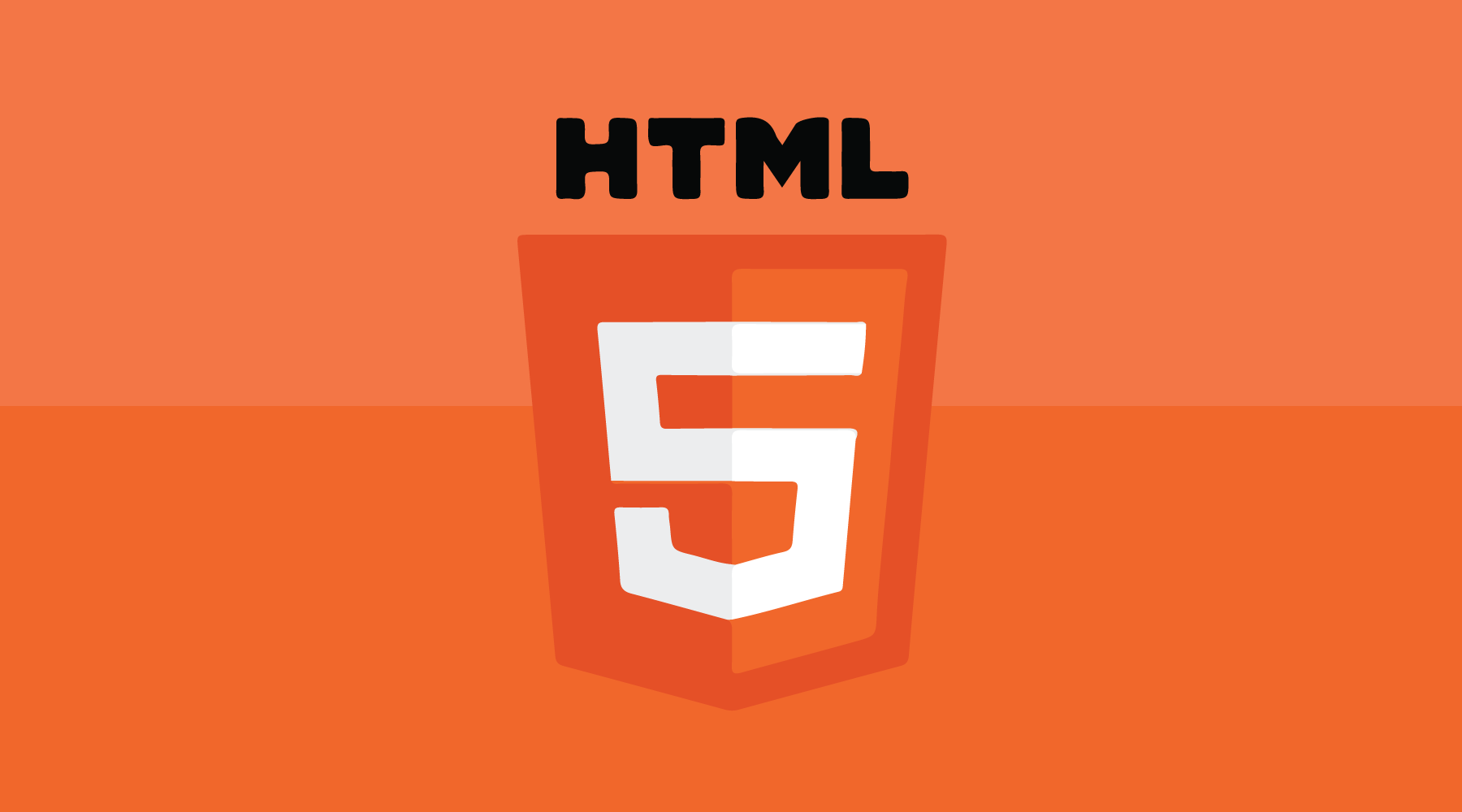
Hacking involves exploring computer systems to find vulnerabilities that can be exploited for various purposes. While HTML is not traditionally considered a programming language, it plays a significant role in web security and hacking.
Understanding the Role of Programming Languages in Hacking
Programming languages play a crucial role in hacking by providing the means to analyze vulnerabilities, develop exploits, and execute attacks effectively. However, HTML’s role in hacking is often misunderstood, as it primarily serves as a markup language for creating web pages.
Exploring HTML for Hacking
HTML (Hypertext Markup Language) is the standard markup language for creating web pages and web applications. It defines the structure and layout of web content using elements and attributes.
While HTML itself is not a programming language in the traditional sense, it can be leveraged for hacking purposes, primarily through web-based attacks such as cross-site scripting (XSS), HTML injection, and phishing attacks.
Applications of HTML in Hacking
HTML is utilized in various hacking scenarios, including:
XSS attacks involve injecting malicious HTML or JavaScript code into web pages viewed by other users, allowing attackers to execute arbitrary code, steal sensitive information, or hijack user sessions.
HTML injection attacks exploit vulnerabilities in web applications to inject malicious HTML code into web pages dynamically generated by the server, enabling attackers to manipulate the appearance and behavior of web content.
Phishing attacks involve creating deceptive web pages that mimic legitimate websites to trick users into revealing sensitive information such as usernames, passwords, and financial details.
Comparison with Other Programming Languages
While HTML is primarily used for markup and presentation purposes, other programming languages such as Python, JavaScript, and PHP play significant roles in the hacking community, offering more extensive capabilities for vulnerability analysis, exploit development, and network manipulation.
HTML Tools and Techniques for Hacking
Several tools and techniques are tailored for HTML-based hacking and web security, including:
- Burp Suite: A comprehensive web application security testing tool used for analyzing web traffic, identifying vulnerabilities, and testing the security of web applications.
- OWASP Zap: An open-source web application security scanner used for detecting and exploiting vulnerabilities in web applications, providing detailed reports and recommendations for remediation.
- BeEF (Browser Exploitation Framework): A powerful tool for exploiting web browser vulnerabilities and conducting client-side attacks, such as XSS and CSRF (Cross-Site Request Forgery).
Learning Resources for HTML Hacking
Aspiring hackers can access a variety of learning resources to master HTML for hacking purposes, including:
- Online Courses: Platforms like Udemy, Coursera, and Cybrary offer courses on web security and ethical hacking, covering topics such as XSS, HTML injection, and phishing attacks.
- Tutorials: Numerous online tutorials and guides offer step-by-step instructions and practical examples for exploiting HTML vulnerabilities and conducting web-based attacks.
- Webinars: Cybersecurity organizations and communities host webinars and workshops on web security topics, providing opportunities to learn from industry experts and practitioners.
Best Practices for Ethical Hacking with HTML
When engaging in ethical hacking with HTML, it’s essential to adhere to best practices to ensure responsible and legal conduct, including:
- Understanding HTML Security Risks: Familiarize yourself with common HTML vulnerabilities and attack vectors, such as XSS, HTML injection, and phishing attacks, to effectively assess and mitigate risks.
- Vulnerability Testing and Patching: Regularly test web applications for HTML vulnerabilities using tools like Burp Suite and OWASP Zap, and promptly patch and update vulnerable components to prevent exploitation.
- Responsible Disclosure: Follow responsible disclosure practices when identifying and reporting HTML vulnerabilities to website owners or software developers, providing clear and actionable recommendations for remediation to protect against potential exploitation by malicious actors.
Read About: Top Best Movies All Time In The World
Assembly – Best Programming Language

Hacking involves exploring computer systems to find vulnerabilities that can be exploited for various purposes. Programming languages serve as essential tools for hackers, enabling them to write scripts, develop exploits, and automate tasks to penetrate systems and networks.
Understanding the Role of Programming Languages in Hacking
Programming languages play a crucial role in hacking by providing the means to analyze vulnerabilities, develop exploits, and execute attacks effectively. Each programming language offers unique capabilities and advantages for hacking purposes, depending on the specific requirements of the task at hand.
Exploring Assembly Language for Hacking
Assembly language is a low-level programming language that provides a symbolic representation of machine code instructions. It allows programmers to interact directly with a computer’s hardware architecture, making it ideal for tasks requiring precise control over system resources and execution flow.
Applications of Assembly Language in Hacking
Assembly language is utilized in various hacking scenarios, including:
Hackers leverage assembly language to craft precise payloads and shellcode that can exploit these vulnerabilities to gain unauthorized access to systems and execute arbitrary code.
Assembly language is essential for reverse engineering binary executables and malware samples to understand their behavior, identify vulnerabilities, and extract sensitive information. Hackers use assembly language disassemblers and debuggers to analyze the underlying assembly code and uncover hidden functionality or security weaknesses.
Assembly language is used to write shellcode, which is a small piece of code designed to spawn a command shell or execute specific commands on a compromised system. Hackers craft shellcode in assembly language to create custom payloads for remote code execution, privilege escalation, and post-exploitation activities in penetration testing and malware development scenarios.
Comparison with Other Programming Languages
While assembly language offers unparalleled control and performance for certain hacking tasks, other programming languages such as Python, C/C++, and Ruby also play significant roles in the hacking community, offering higher-level abstractions, extensive libraries, and rapid development capabilities for a wide range of hacking scenarios.
Assembly Language Tools and Techniques for Hacking
Several tools and techniques are tailored for assembly language-based hacking and reverse engineering, including:
- Debuggers and Disassemblers: Tools like IDA Pro, OllyDbg, and Radare2 provide comprehensive support for debugging, disassembling, and analyzing assembly code, allowing hackers to inspect and manipulate binary executables with precision.
- Shellcode Generators: Frameworks like Metasploit and Shellter automate the generation of custom shellcode payloads in assembly language, enabling hackers to create tailored exploits for specific vulnerabilities and target platforms.
- Malware Development: Assembly language is widely used in malware development for creating stealthy and sophisticated malware implants, rootkits, and backdoors that evade detection and bypass security controls.
Learning Resources for Assembly Language Hacking
Aspiring hackers can access a variety of learning resources to master assembly language for hacking purposes, including:
- Online Courses: Platforms like Udemy, Coursera, and Cybrary offer courses on assembly language programming, reverse engineering, and exploit development, covering topics such as x86 assembly, shellcoding, and binary exploitation.
- Books: Publications such as “Practical Reverse Engineering” by Bruce Dang, “Shellcoder’s Handbook” by Chris Anley et al., and “Art of Assembly Language” by Randall Hyde provide comprehensive guides to assembly language hacking and reverse engineering.
- Tutorials: Numerous online tutorials, blog posts, and walkthroughs offer step-by-step instructions and practical examples for analyzing, exploiting, and defending against assembly language-based attacks and malware samples.
Best Practices for Ethical Hacking with Assembly Language
When engaging in ethical hacking with assembly language, it’s essential to adhere to best practices to ensure responsible and legal conduct, including:
- Legal Compliance: Understand and adhere to laws and regulations governing cybersecurity and ethical hacking practices to avoid legal repercussions and ensure ethical conduct.
- Continuous Learning and Skill Development: Stay updated on the latest developments in assembly language, reverse engineering, and exploit development through self-study, training programs, and participation in cybersecurity communities.
- Collaboration and Responsible Disclosure: Foster collaboration with other security researchers and software developers, and follow responsible disclosure practices when identifying and reporting vulnerabilities to facilitate timely remediation and protect against potential exploitation by malicious actors.
Read About: Top Best Mobiles All Time In The World





